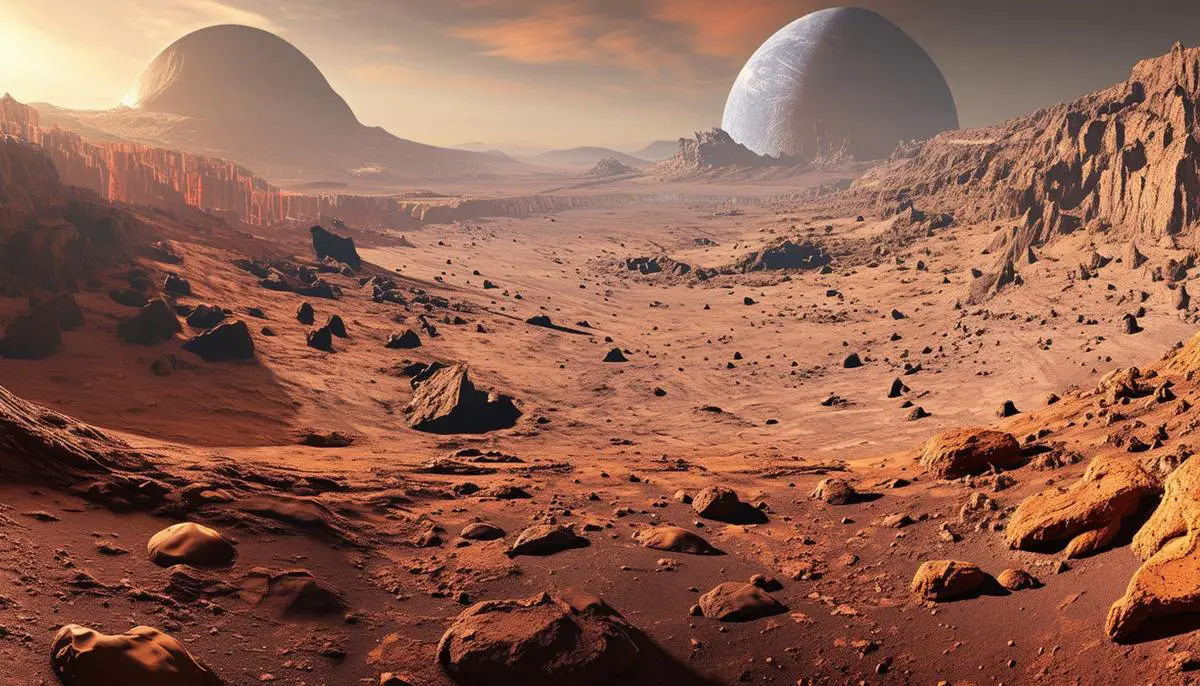For those captivated by the mysteries of Mars, understanding its geological features offers a glimpse into the planet's dynamic history. From towering volcanoes to expansive canyons, each landmark on Mars provides invaluable insights into its past and potential for future exploration.
1. Olympus Mons
Olympus Mons, the tallest volcano in the solar system, towers 16 miles (25 kilometers) above the Martian surface, nearly three times the height of Earth's Mount Everest. Located in the Tharsis volcanic region, this colossal structure is a testament to Mars' weaker gravitational pull, which allows such massive formations.
The volcano's gradual slopes span hundreds of miles, providing an accessible pathway for potential rovers and human explorers. These gradients could enable detailed studies of Mars's volcanic history and current geological state. At the summit, a caldera 50 miles (80 kilometers) wide reveals the scale of past eruptions, offering insights into the forces that shaped Mars.
For future missions, Olympus Mons offers unparalleled opportunities to study Mars's volcanic activity, atmospheric conditions, and potential subsurface resources. Its sheer scale and scientific value make it a top priority for those seeking to understand the Red Planet's geological and environmental history.
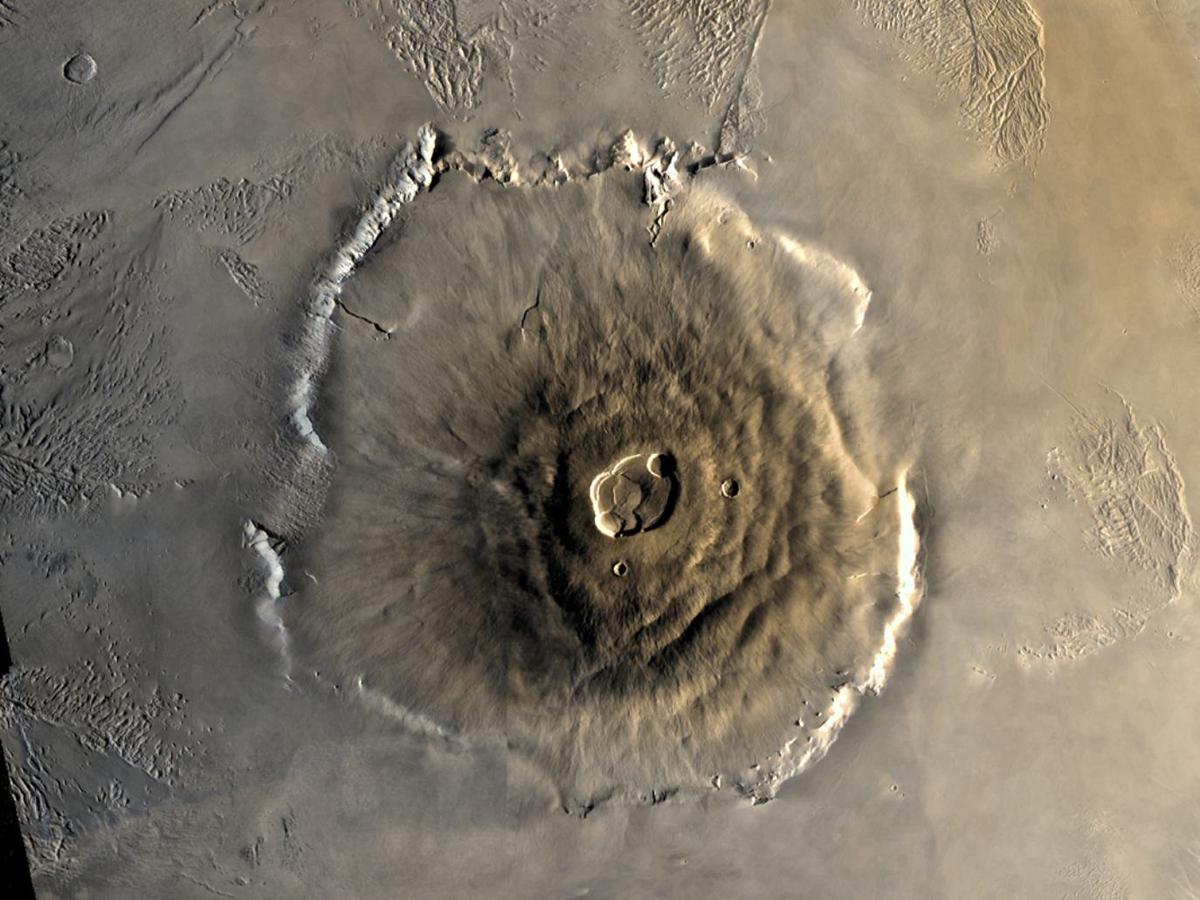
2. Tharsis Volcanoes
The Tharsis region, a vast area comparable to North America, is home to 12 monumental volcanoes spread across 2,500 miles (4,000 kilometers). Unlike Earth's steep, conical volcanoes, these are shield volcanoes characterized by broad, gentle slopes formed by low-viscosity lava flows.
Volcanoes like Arsia Mons, Pavonis Mons, and Ascraeus Mons dominate the landscape, each rising over 10 miles (16 kilometers) above the Martian plains. These giants provide a unique perspective on the potency of Martian volcanic forces and their influence on the planet's atmosphere and climate over time.
Scientific and Practical Advantages:
- Expansive lava plains and ancient calderas offer countless opportunities for geological studies
- Relatively flat terrain could serve as potential landing sites for human missions
- Mineral-rich lava may provide valuable resources for building habitats and infrastructure
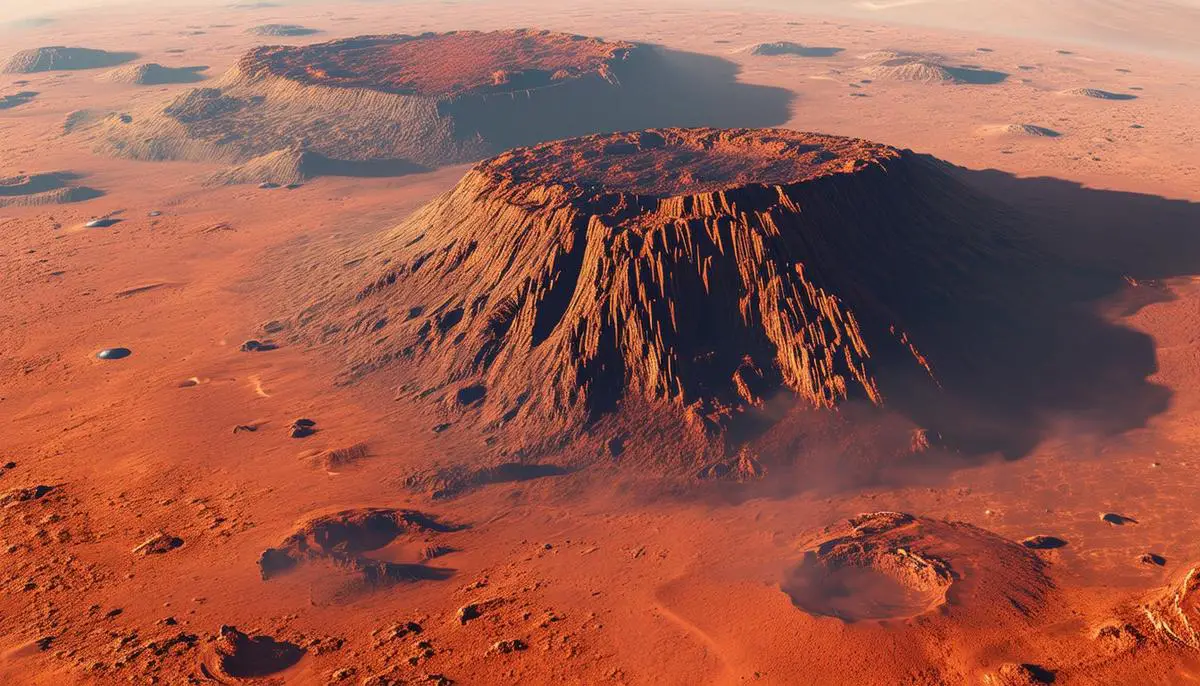
3. Valles Marineris
Valles Marineris, stretching 1850 miles (3000 kilometers) in length, is the largest canyon in the solar system. Its formation likely resulted from tectonic activities, erosion, and volcanic activity, offering a window into Mars' geological history.
The canyon system is divided into several sections, each with unique features:
- Candor Chasma and Ophir Chasma: Noted for their complex layering of sediments and landslides
- Melas Chasma: The deepest part, plunging over 7 miles (11 kilometers) to the canyon floor
Studying Valles Marineris could help scientists unravel the mysteries of Mars' ancient climate and environmental conditions. The detection of hydrated minerals within the canyon suggests the past presence of water, which could be crucial for sustaining long-term human missions.1
From a logistical perspective, the extensive canyon walls may serve as natural shelters, providing protection from Mars' harsh surface conditions such as radiation and dust storms.
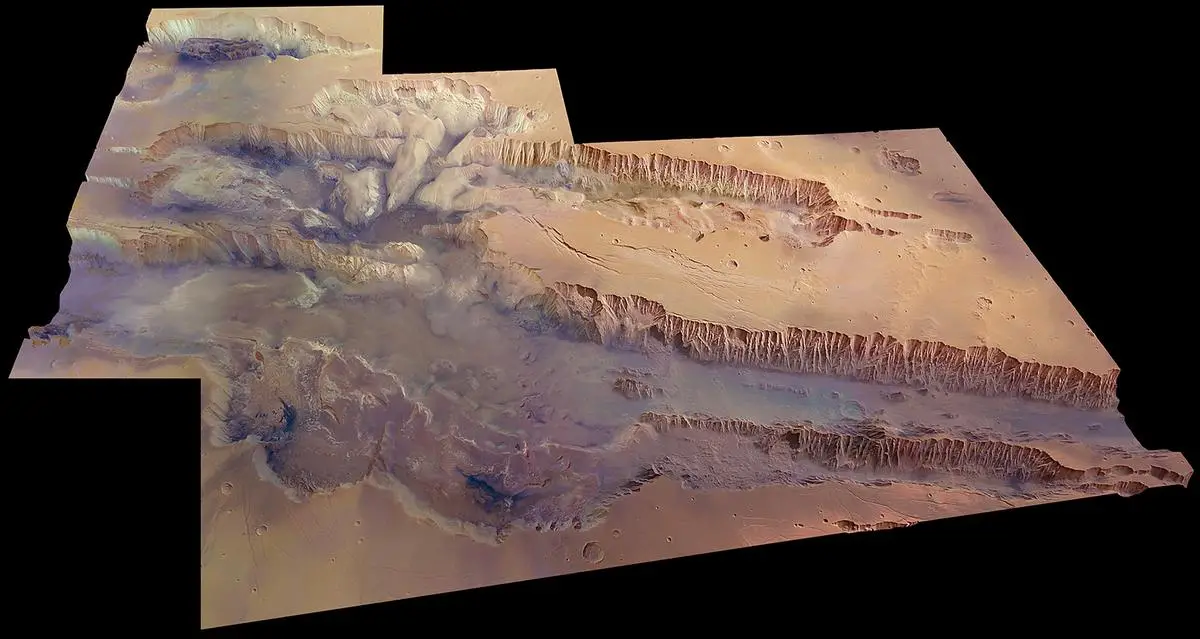
4. The North and South Poles
The Martian poles, capped with layers of water ice and carbon dioxide ice, showcase dynamic seasonal changes that reflect the planet's climate cycles. These frozen expanses hold profound scientific and practical significance for future exploration.
The North Pole (Planum Boreum) and South Pole (Planum Australe) experience annual cycles of CO₂ freezing and sublimation, providing a natural record of the planet's atmospheric and climatic shifts. Perennial water ice exists beneath the seasonal CO₂ layers, preserving clues to past climates.
Exploration Significance:
- Water ice: Abundantly available for drinking water, growing food, and producing rocket fuel
- Climate history: Layered ice deposits chronicle the planet's climatic past
- Potential habitability: May reveal periods when Mars was more hospitable to life
Exploring these icy frontiers will pose unique challenges, such as extreme cold temperatures dropping to -125°C (-193°F) in winter.2 However, the wealth of scientific knowledge and resource potential make the polar regions indispensable targets for research and preparation for long-term colonization.
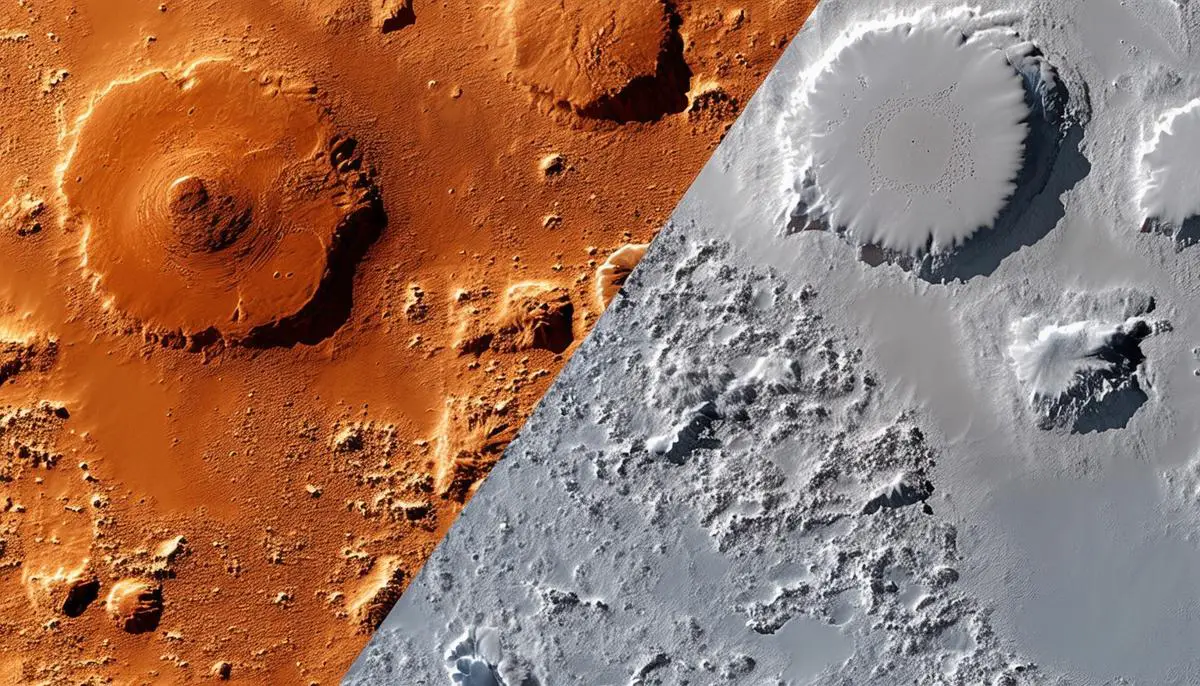
5. Gale Crater and Mount Sharp (Aeolis Mons)
Gale Crater, the landing site of the Curiosity rover, is a compelling area for future Mars exploration. This ancient crater, approximately 96 miles (154 kilometers) in diameter, contains evidence of past water activity. At its center rises Mount Sharp (Aeolis Mons), a peak about 3.4 miles (5.5 kilometers) high, offering layers of Martian history for study.
Curiosity's findings have revealed a once-habitable environment, including:
- Streambeds
- Sediment layers
- Minerals formed in the presence of water
Future explorers can expand on these discoveries by further investigating the region's geology and mapping ancient water features.
Mount Sharp's stratigraphy provides an excellent opportunity to study Mars' history. Each layer corresponds to a different epoch, allowing explorers to decode changes in the planet's climate and environmental conditions over time. The diverse mineralogy found on its slopes can provide insights into water-rock interactions and Mars' climatic evolution.
The crater's relatively flat floor offers a suitable landing spot and potential base of operations. Proximity to Mount Sharp could provide protection against radiation and dust storms for future habitats. The area's rich geological diversity supports extensive scientific investigations and sample collection.
Exploring Gale Crater and Mount Sharp could also assist in developing technologies for:
- Extracting water
- Growing food
- Maintaining habitats
These are crucial elements for a sustainable human presence on Mars.
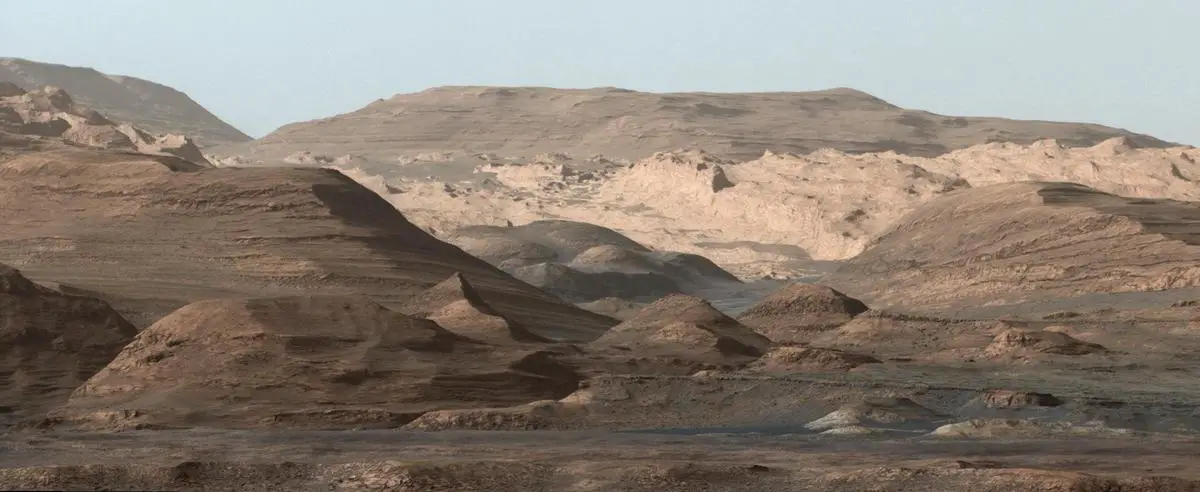
6. Medusae Fossae
Medusae Fossae is an expansive volcanic deposit on Mars, stretching over 620 miles (1,000 kilometers). Its wind-sculpted formations offer valuable insights into Martian volcanic and erosional processes.
The origin of Medusae Fossae is believed to be the result of numerous volcanic eruptions over approximately 500 million years. These eruptions likely released vast quantities of volcanic ash and gas, creating a thick blanket of fine-grained material that underwent wind erosion. The result is an array of ridges and grooves resembling fingerprint patterns or ancient sand dunes.
Exploring Medusae Fossae provides an opportunity to study Mars' volcanic history and climate. The fine material composing the region offers clues to historical and current wind patterns. By examining these deposits, scientists can gain insights into Mars' atmospheric conditions throughout its history.
"The wind-sculpted formations here demonstrate the power of Martian winds in shaping the planet's surface."
Analyzing these features can improve our understanding of Martian erosion mechanics and the role of wind in landscape formation.
Medusae Fossae's deposits may contain trapped gases from ancient eruptions, potentially revealing information about Mars' ancient atmosphere. The fine-grained nature of the deposits may facilitate sample extraction for detailed analysis, providing data on the region's past volcanic activity.
For human missions, Medusae Fossae presents both challenges and opportunities. While the fine material may complicate landing and roving, the scientific value of the region makes it a compelling target. The area's wind-sculpted features could potentially provide natural windbreaks for future habitats.
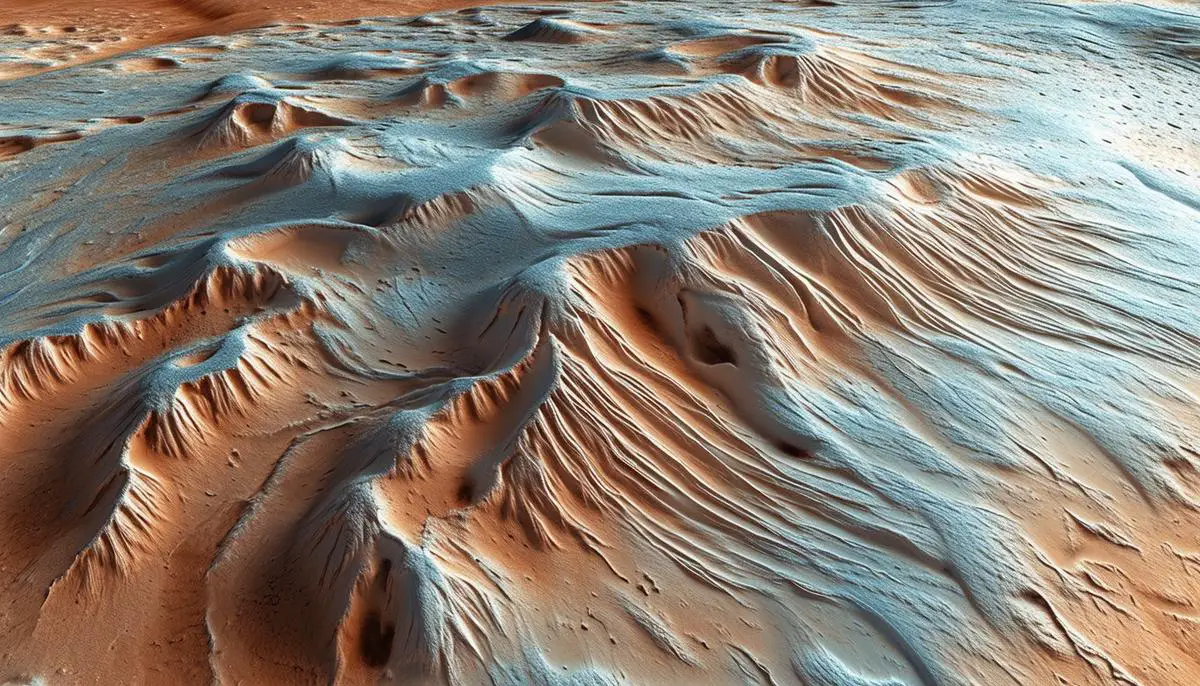
7. Recurring Slope Lineae in Hale Crater
Hale Crater on Mars features intriguing formations known as Recurring Slope Lineae (RSL). These dark streaks appear seasonally on the crater's steep slopes, potentially indicating the presence of liquid water – an exciting prospect for scientists studying Martian hydrology and potential life.
The RSL in Hale Crater emerge during warmer months and fade during colder periods, suggesting a possible connection to briny water capable of remaining liquid at lower temperatures. This dynamic process could be driven by subsurface water flows or salt deposits interacting with the surface environment.
Studying RSL provides vital clues about Mars' current climate and geological activity, hinting at a more active hydrological cycle than previously thought. The presence of liquid water under Martian conditions would be a significant finding, with implications for astrobiology and the potential for microbial life on Mars.
Hale Crater's well-preserved geology offers an ideal setting for examining RSL. Future missions could deploy rovers with specialized instruments to analyze the composition of these streaks and the underlying soil, potentially confirming the presence of hydrated salts or other water-indicating minerals.
For human explorers, Hale Crater presents both challenges and opportunities:
- Challenges: Steep terrain requires advanced landing and mobility technologies
- Opportunities: Substantial scientific rewards and potential water resources
If RSL contain seasonal flowing water, they could serve as a crucial resource for long-term human missions on Mars.
Careful planning and adherence to planetary protection protocols will be necessary to avoid contaminating potential habitats with Earth microbes during future explorations of this site.
8. 'Ghost Dunes' in Noctis Labyrinthus and Hellas Basin
The ghost dunes in Noctis Labyrinthus and Hellas Basin are remnants of ancient dunes preserved by subsequent lava or water flows. These features provide insights into the interplay between wind and water over Mars' climatic history.
Noctis Labyrinthus
Characterized by a maze-like network of deep valleys and canyons, these petrified dunes offer a glimpse into Mars' past. Formed over millions of years, they were once towering structures similar to active dune fields seen today. Lava flows subsequently blanketed and preserved their forms.
Hellas Basin
The largest visible impact basin in the Solar System, ghost dunes are found hundreds of meters below the present-day surface. Ancient water or lava flows have fossilized these dunes, transforming them into enduring structures that retain their shape while the surrounding landscape erodes.
By studying the preserved shapes, sizes, and orientations of these dunes, scientists can infer:
- Past wind patterns
- Water flow directions
- Atmospheric conditions
The detection of mineral deposits within these structures could highlight periods of liquid water interaction with Martian dust.
For human missions, Noctis Labyrinthus and Hellas Basin offer both scientific opportunities and logistical advantages. These relatively stable terrains could serve as ideal sites for research bases, offering safety from active geological processes and proximity to significant scientific resources.
Studying ghost dunes could further our understanding of Mars' transformation from a potentially wet and warm environment to its current arid and cold state. This research contributes to the broader story of Mars' climatic evolution and its implications for future habitability.
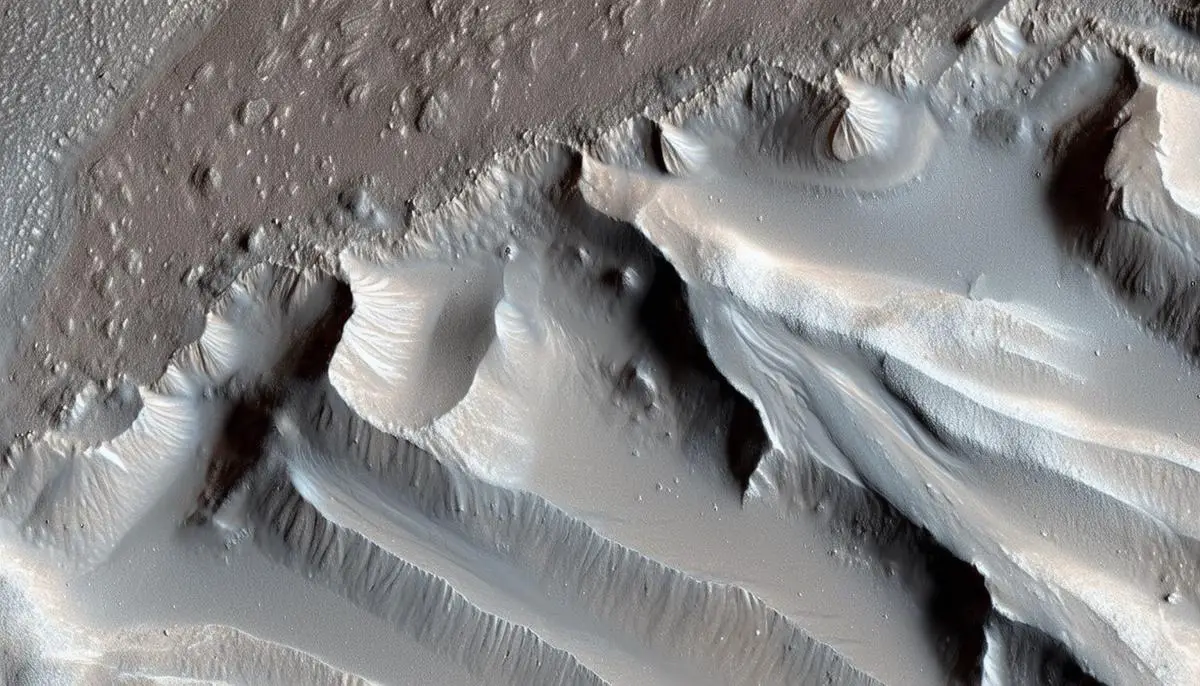
These Martian landmarks serve as gateways to understanding the Red Planet's hidden stories. As future explorers traverse these ancient landscapes, they will uncover secrets that could redefine our knowledge of Mars and its capacity to support life.
![]()
